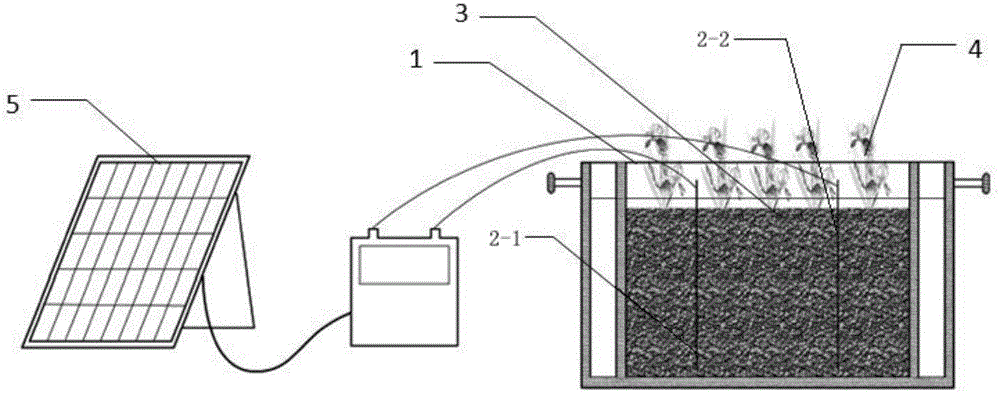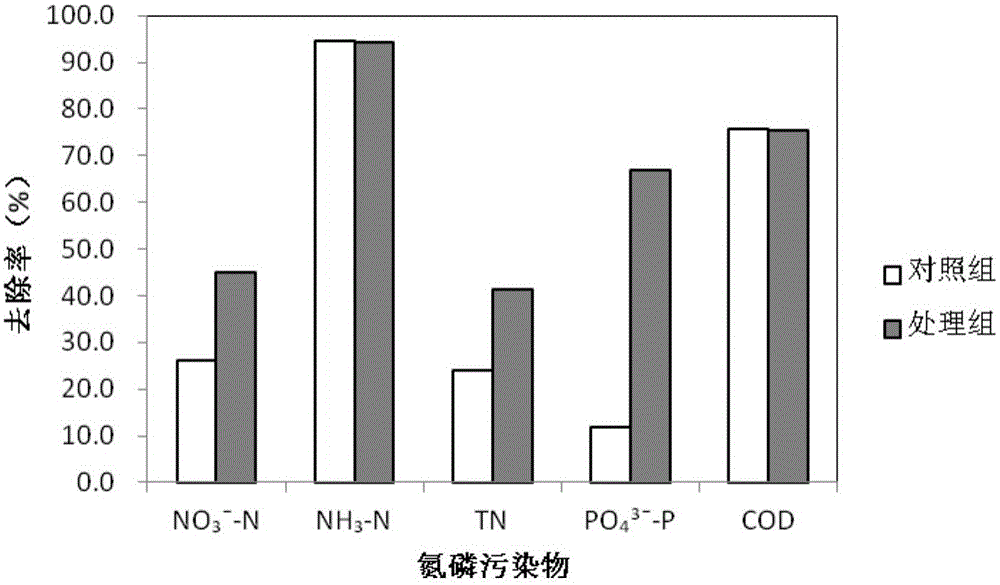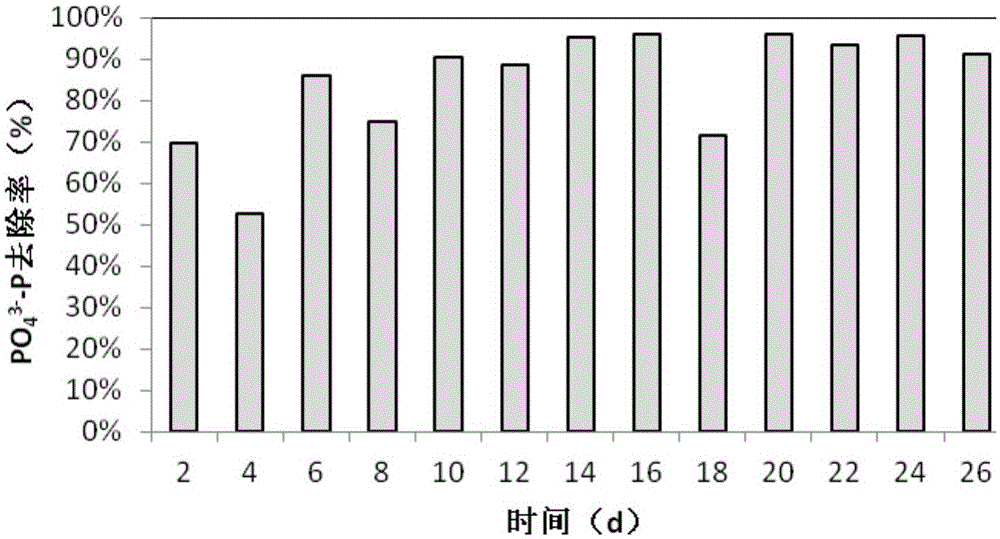Photoelectric artificial wetland and application thereof
A constructed wetland and photoelectric technology, applied in the direction of sustainable biological treatment, water pollutants, energy wastewater treatment, etc., can solve the problems of poor nitrogen and phosphorus removal treatment effects, so as to avoid secondary pollution, ensure treatment effect, improve The effect of adsorption capacity of nitrogen and phosphorus
- Summary
- Abstract
- Description
- Claims
- Application Information
AI Technical Summary
Problems solved by technology
Method used
Image
Examples
Embodiment 1
[0041] like figure 1 As shown in the figure, the simulation device of photovoltaic constructed wetland constructed in the laboratory is composed of a subsurface-flow constructed wetland simulation device and a photovoltaic power supply system. A water inlet is arranged on the side wall of the upper part of the water inlet area of the submerged flow constructed wetland bed, and a water outlet is arranged on the other side wall of the water outlet area of the device. The subsurface constructed wetland contains filler, which is crushed stone and biomass charcoal. The biomass charcoal was prepared by heating reed, calamus and Siberian iris at 600℃ for 2h under the condition of isolated air, and the particle size was 3-10mm, accounting for 50% of the total volume of the filler. Siberian iris and round coin grass are planted above the filling at a planting density of 83 plants / m2 2 .
[0042] A cathode plate and an anode plate are arranged in the submerged flow constructed we...
Embodiment 2
[0045] It is the same as the simulation device of the photovoltaic constructed wetland described in Example 1, the difference is that there are two cathode plates and one anode plate in the submerged flow constructed wetland, and the anode plate is located in the middle of the two cathode plates, that is, the cathode plate. Symmetrically distributed on both sides of the anode plate.
Embodiment 3
[0047] The same as the simulation device of the photovoltaic constructed wetland described in Example 2, the difference is that the volume percentage of biomass carbon filled in the photovoltaic constructed wetland is 25%, the main electrode material of electrolysis is iron, and the electrode between the cathode and anode is iron. The plate spacing is 20cm, the effective height of the electrodes in the constructed wetland is 23cm, the voltage of the photovoltaic panel is 17V; the voltage of the lead-acid battery is 12V, and the current density applied to the electrolysis reaction is 0.232mA / cm 2 ; The area ratio of electrode to treated wetland is 1.725. The hydraulic retention time of sewage in the treatment process is 24h. The experiment was repeated 3 times.
PUM
| Property | Measurement | Unit |
|---|---|---|
| Particle size | aaaaa | aaaaa |
Abstract
Description
Claims
Application Information
 Login to View More
Login to View More - R&D
- Intellectual Property
- Life Sciences
- Materials
- Tech Scout
- Unparalleled Data Quality
- Higher Quality Content
- 60% Fewer Hallucinations
Browse by: Latest US Patents, China's latest patents, Technical Efficacy Thesaurus, Application Domain, Technology Topic, Popular Technical Reports.
© 2025 PatSnap. All rights reserved.Legal|Privacy policy|Modern Slavery Act Transparency Statement|Sitemap|About US| Contact US: help@patsnap.com



